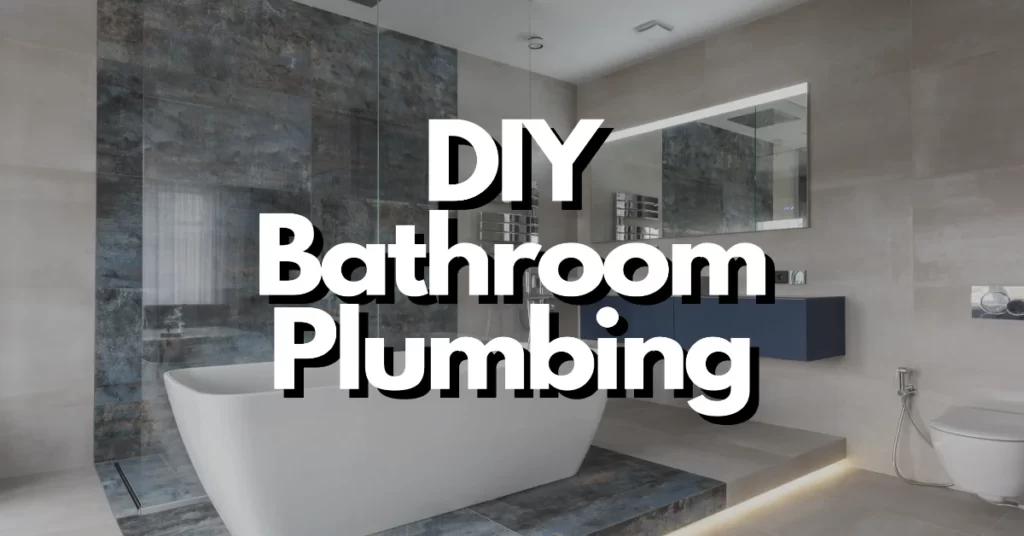Bathroom plumbing can be a bit intimidating for the average homeowner. Leaky faucets, clogged drains, or even installing a new toilet may seem like complex tasks best left to the professionals. However, with the right skills, tools, and guidance, many bathroom plumbing projects can be tackled as DIY endeavors.
In this guide, we’ll explore the essential skills and tools you need to successfully complete DIY bathroom plumbing projects while offering valuable tips for a smooth experience.
Essential Skills for DIY Bathroom Plumbing
Before you dive into DIY bathroom plumbing, it’s important to assess your skill level and ensure you’re comfortable with the following fundamental plumbing skills:
- Safety Awareness: Prioritize safety above all else. Familiarize yourself with safety guidelines, such as turning off the water supply and gas lines when necessary, wearing appropriate safety gear (gloves and safety glasses), and using tools properly.
- Basic Plumbing Knowledge: Understand the basic concepts of plumbing, including pipe types, fittings, and how water flows through your bathroom plumbing system.
- Problem Solving: Be prepared to troubleshoot common bathroom plumbing issues, such as leaks, clogs, and low water pressure. Effective problem-solving is a key skill in plumbing.
- Pipe Cutting and Fitting: Learn how to cut and fit pipes, as this is a fundamental skill for many plumbing tasks. You’ll need to understand different pipe materials, such as PVC, copper, and PEX.
- Soldering (for copper pipes): If you plan to work with copper pipes, mastering soldering techniques is essential for creating leak-free joints.
- Sealing and Teflon Tape Application: Properly seal threaded connections using Teflon tape or pipe joint compound to prevent leaks.
- Fixture Installation: Be able to install and secure bathroom fixtures like faucets, toilets, sinks, and showerheads.
Essential Tools for DIY Bathroom Plumbing
Equipping yourself with the right tools is crucial for a successful DIY bathroom plumbing project. Here’s a list of essential tools you’ll need:
- Adjustable Wrench: For tightening and loosening nuts on pipes and fixtures.
- Pipe Wrench: Specifically designed for gripping and turning threaded pipes and fittings.
- Plunger: An essential tool for clearing clogged drains and toilets.
- Hacksaw or Tubing Cutter: Used to cut pipes to the desired length.
- Pipe Cutter for Copper Pipes: A specialized tool for cutting copper pipes cleanly and accurately.
- Plumber’s Tape (Teflon Tape): Used to seal threaded connections and prevent leaks.
- Pipe Joint Compound: Another option for sealing threaded connections.
- Pipe and Tubing Bender (for copper pipes): Necessary if you need to bend copper pipes to fit your plumbing layout.
- Propane Torch and Solder (for copper pipes): For soldering copper pipe joints.
- Plumbers’ Putty: Used to create watertight seals around fixtures like sinks and drains.
- PVC Pipe Cutter and Cement: Essential for working with PVC pipes.
- Tongue-and-Groove Pliers: Useful for gripping, holding, and turning various plumbing components.
- Hole Saw or Tile Hole Saw: If you need to drill holes in tile or other surfaces for plumbing connections.
- Plumbing Snake or Auger: Helpful for clearing stubborn drain clogs.
Tips for Successful DIY Bathroom Plumbing
Now that you have a good understanding of the skills and tools needed, here are some additional tips to ensure a successful DIY bathroom plumbing project:
- Plan and Research: Thoroughly research your specific project and create a detailed plan before you start. Understand the layout of your existing plumbing and any local building codes.
- Measure Twice, Cut Once: Double-check all measurements and cuts to avoid costly mistakes.
- Turn Off Water and Gas: Always turn off the water supply and gas lines before working on any plumbing project.
- Take Your Time: Don’t rush through the project. Patience is key to achieving quality results.
- Follow Instructions: If you’re installing new fixtures or appliances, read and follow the manufacturer’s instructions carefully.
- Test for Leaks: After completing your plumbing work, thoroughly test for leaks before closing up walls or floors.
- Know When to Call a Pro: While DIY plumbing can be cost-effective and satisfying, don’t hesitate to call a professional for complex projects or if you’re unsure about a task’s safety.
Conclusion
With the right skills, tools, and a dose of confidence, many bathroom plumbing projects can be successfully tackled as DIY endeavors.
Remember to prioritize safety, be patient, and seek professional assistance when needed to ensure your bathroom plumbing projects are a success.
